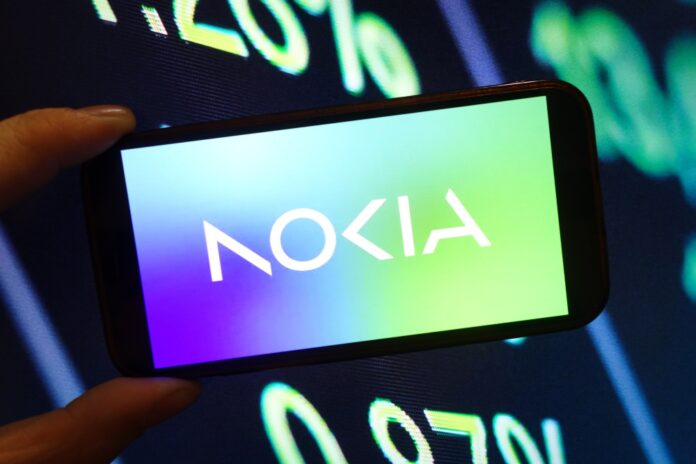The changes were announced at the company’s Capital Markets Day, to better align with customers and capitalise on the boom in AI infrastructure
At Nokia’s Capital Markets Day 2025 it is announcing a new strategy and strategic business KPIs, an evolution of its operating model and changes to the group leadership team. It new financial goals are to grow its annual comparable operating profit to a range of €2.7 to €3.2 billion by 2028, an increase from the €2.0 billion generated between Q4 2024 and Q3 2025. This is separate from earnings guidance figures.
It seems off to a good start: yesterday Nokia announced it has won a three-year contract with Telecom Italia to expand 5G coverage and add capacity. Currently, Nokia kit is thought to account for a little over 20% of TIM’s RAN, according to Lightreading, citing “a reliable source”. The new contract will increase that by about 40%, making it the largest 5G supplier in the network, entirely at Ericsson’s expense. The contract includes supply of solutions from Nokia’s AirScale RAN portfolio, including Habrok 32 Massive MIMO radios and its Pandion FDD multi-band remote radio heads (RRH).
In October, the company’s share hit a 10-year high when NVIDIA announced it would invest $1 billion in Nokia to accelerate AI-RAN innovation and lead the transition from 5G to 6G…although its slumped somewhat since…
Back to now
According to the announcements at Capital Markets Day, from 1 January 2026, the company will have two primary operating segments – Network Infrastructure and Mobile Infrastructure. The rationale is this structure is better aligned to customers’ needs and to “accelerate innovation as the AI supercycle increases demand for advanced connectivity”.
The new strategy has five priorities:
- Accelerate growth in AI & Cloud
- Lead the next era of mobile connectivity with AI-native networks and 6G
- Grow by co-innovating with customers and partners
- Focus capital where Nokia can differentiate
- Unlock sustainable returns.
Two new segments
Nokia sees Network Infrastructure as a growth area that can capitalise on the global AI and data center build-out while continuing to serve its telecoms customer base. This segment will continue to be led by David Heard and consists of three business units Optical Networks, IP Networks and Fixed Networks.
The new Mobile Infrastructure segment will bring together the Core Networks and Radio Networks portfolios, and Technology Standards, formerly Nokia Technologies. Its ambitions are leadership in core and radio network technology and services to deliver AI-native networks and 6G. It will be led by the group CEO and President, Justin Hotard, on an interim basis and will comprise three business units Core Software, Radio Networks and Technology Standards. Hotard took up the reins at Nokia in April, joining from Intel.
Changes at the top
Also from 1 January, Raghav Sahgal will become Nokia’s Chief Customer Officer and continue in the Group Leadership Team. Patrik Hammarén will also continue in the Group Leadership Team as President, Technology Standards (formerly Nokia Technologies) while Tommi Uitto will step down from the Group Leadership Team at the end of this year.
According to a local Finnish newspaper, local newspaper Helsingin Sanomat (HS), Nokia has appointed Timo Ihamuotila as the new chair of its Board of Directors. He will succeed Sari Baldauf, who has held that role since 2020 at the company’s Annual General Meeting (AGM) in the spring, unnamed sources say. It is thought Baldauf is retiring. Ihamuotila was appointed to the board at the previous AGM and he has also served as CFO of ABB Group.
Portfolio Businesses segment
As part of devising the new strategy, Nokia reviewed its business portfolio and identified several units are not seen as core to the future of the company’s strategy, although some have “compelling growth opportunities”. They will be shunted into an operating segment called Portfolio Businesses while the company assesses the best way to extract value from them in 2026.
The businesses that will be moving under the Portfolio Businesses segment are
- Fixed Wireless Access CPE (currently in Fixed Networks in Network Infrastructure)
- Site Implementation and Outside Plant (currently in Fixed Networks in Network Infrastructure)
- Enterprise Campus Edge (currently in Cloud and Network Services)
- Microwave Radio (currently in Mobile Networks).
Nokia stresses its priority will be to ensure continuity for customers and employees during the transition. Over the last year, the units collecitvely generated net sales of about €900 million at an operating loss of EUR 100 million.
Moving defence into incubation
Nokia Defense is being launched as an incubation unit to serve as the central go-to-market and R&D hub for Nokia’s defence portfolio. It will bulld on the foundation of Nokia Federal Solutions in the US. The company sees opportunities to deliver defence-grade solutions, based on Nokia’s core technologies in Network and Mobile infrastructure, in the US, Finland and other allied countries.
Long-term financial target, strategic KPIs
Nokia’s new long-term financial target (to achieve comparable operating profit of €2.7 billion to €3.2 billion by 2028 is not part of the group level financial outlook. It replaces Nokia’s former long-term targets which were: to grow faster than the market; achieve a comparable operating margin of at least 13%; and free cash flow conversion from comparable operating profit of 55% to 85%.
Nokia says it is exposed to different trends across its primary segments and will use different strategic levers across the company maximise shareholder value, based on the greatest opportunities. To this end, it is introducing a series of strategic KPIs which illustrate the expected outcomes of Nokia’s strategy. These KPIs are not part of the group level financial outlook.
- Net sales growth in Network Infrastructure: Nokia targets 6-8% net sales CAGR during 2025-2028. This includes a 10-12% target for the combined Optical Networks and IP Networks.
- Network Infrastructure operating margin: 13% to 17% by 2028
- Mobile Infrastructure gross margin: 48-50% by 2028
- Mobile Infrastructure operating profit: Grow from a base of EUR 1.5 billion
- Group Common and Other operating expenses: EUR 150 million operating expenses down from the current EUR 350 million run-rate by 2028.
- Free cash flow conversion: Nokia targets to deliver free cash flow conversion from comparable operating profit of between 65% and 75%.
Provisional financial information
Nokia will begin reporting its financial results under the new segment structure in its first quarter 2026 financial results. The company intends to publish recast financials for both 2024 and 2025 under the new reporting structure during the first quarter of 2026. The table below shows the estimated provisional breakdown of the business within the new reporting framework. The figures are also provided proforma for the Infinera acquisition.
| Q4’24 – Q3’25 (€ billion) | Net sales | Gross margin | Operating profit | Operating margin |
| Network Infrastructure* | 7.8 | 43% | 0.8 | 10% |
| Mobile Infrastructure | 11.6 | 48% | 1.5 | 13% |
| Portfolio businesses | 0.9 | 22% | -0.1 | N/A |
| Group Common and Other | -0.2 | N/A | ||
| Nokia comparable* | 20.3 | 45% | 2.0 | 10% |
*This provisional financial information is also shown proforma for the Infinera acquisition.
From the Q1 2026 financial results, Nokia will provide full segment reporting each quarter for the new segments (that is, net sales, gross profit, operating profit) and will also provide revenue disclosure for the business units within the primary operating segments.
“Nokia changed the world once by connecting people — and will again by connecting intelligence,” said Justin Hotard, President and CEO of Nokia. “As the trusted western provider of secure and advanced connectivity, our technology is powering the AI supercycle. From fixed to mobile infrastructure we are developing technology that accelerates value for our customers. I am proud of the work Team Nokia is doing to focus and lead this critical era in connectivity”.




